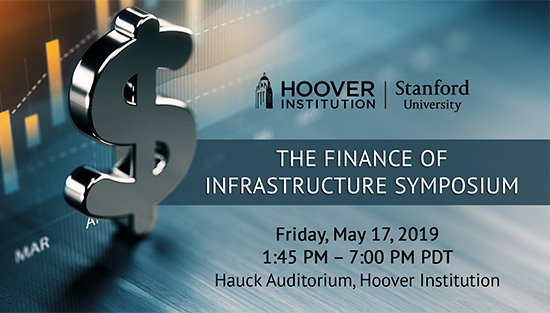Professor Roman Kräussl from the Luxembourg School of Finance travelled to the United States in May 2019 to present his latest research on the risk and return characteristics of infrastructure investments.
Co-authored with Aleksandar Andonov, Associate Professor of Finance at the University of Amsterdam, and Joshua Rauh, Director of Research and Senior Fellow at the Hoover Institution, as well as Finance Professor at Stanford University, Prof. Kräussl’s research paper investigates infrastructure as an asset class from the perspective of a limited partner.
Presenting their paper at the annual “New Developments in Long-term Asset Management” conference, organised by Professor Monika Piazzesi (Stanford University) and Professor Luis M. Viceira (Harvard Business School) and hosted by the National Bureau of Economic Research (NBER) in Cambridge, Massachusetts, the three co-authors show that institutional investors, such as pension funds, insurance companies and sovereign wealth funds, are becoming increasingly active alongside governments in the provision of capital to infrastructure funds and projects. These comprise investments in renewable energy, traditional energy, transportation, utilities, telecoms and social infrastructure.
The stated value proposition of infrastructure as an investment is given by its attractive financial attributes, such as strong returns, a low sensitivity to the business cycle, little correlation with equity market, long-term stable and predictable cash flows. But do infrastructure investments live up to this promise?
Infrastructure funds
Professor Kräussl and his colleagues find that the majority of investments by institutional investors is made through closed funds that have a private equity type of structure. Infrastructure funds do not provide more stable cash flows to institutional investors than other alternative assets.
Infrastructure funds also do not provide less risky returns and the distribution of returns delivered by infrastructure funds is as wide as the distribution of returns delivered by buyout and real estate funds. The cash flows and performance delivered by private infrastructure funds depend primarily on exiting (selling) the underlying assets, which does not deliver stable payout and is not in line with the stated objectives of long-term investors.

They conclude that public investors are not pursuing strategies whose goals are pure value maximisation in asset classes closely linked to government policies. Nonetheless, given the relatively low share of local infrastructure investments, much of the subsidy is going to regions and countries that are outside of the institutional investor’s home state or country.
“The Finance of Infrastructure Symposium”
While in the United States, Professor Roman Kräussl, who has been invited since 2017 to be a Visiting Fellow at the Hoover Institution at Stanford University, also travelled to California to co-organise and chair “The Finance of Infrastructure Symposium”.
At the event, which brought together leading academic scholars, finance experts and policymakers from across the US and the world, six academic papers on infrastructure investments got presented and discussed.
Sir Danny Alexander of the Asia Infrastructure Investment Bank (AIIB) presented the policy keynote address on “The Role of International Financial Institutions in Supporting Infrastructure” and Edward Glaeser of Harvard University delivered the academic keynote talk on “Incentives, Infrastructure and Institutions: Building, Funding and Managing Public Works.” A panel discussion on “The Finance of Infrastructure: Present and Future” included Isela Bahena, Nuveen/TIAA; Michael Bennon, Stanford Global Projects Center; John Graves, Washington State Investment Board; Adebayo Ogunlesi, Global Infrastructure Partners; and was moderated by Professor Roman Kräussl.
On the day, event participants discussed the infrastructure “gap” between planned and desired infrastructure, shared views on obstacles that exist to the financing of infrastructure, as well as made policy conclusions given these hurdles.
